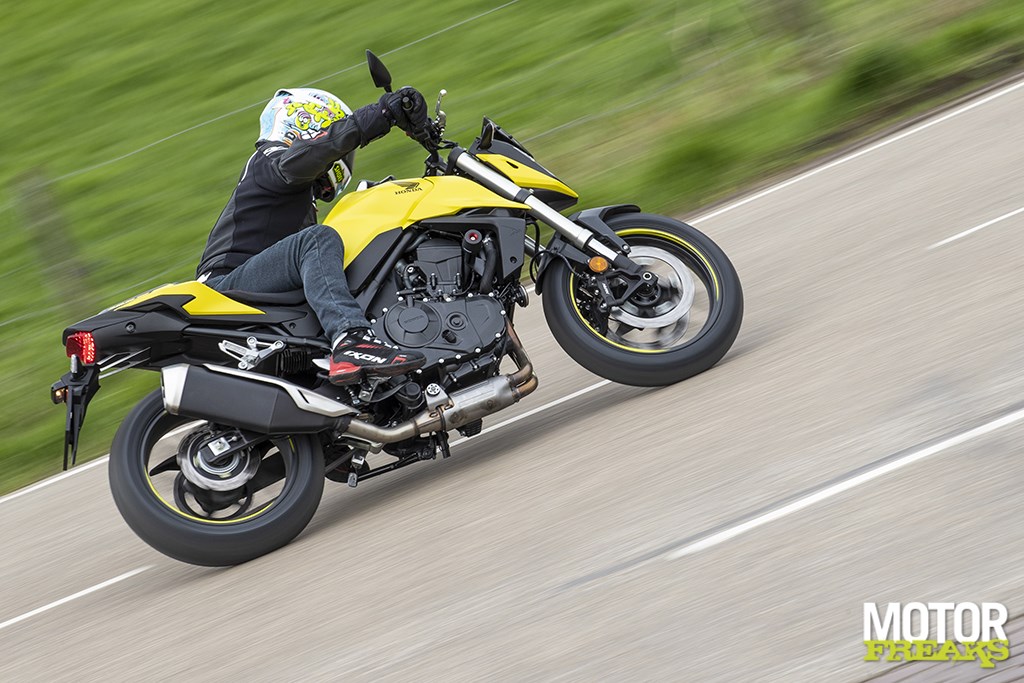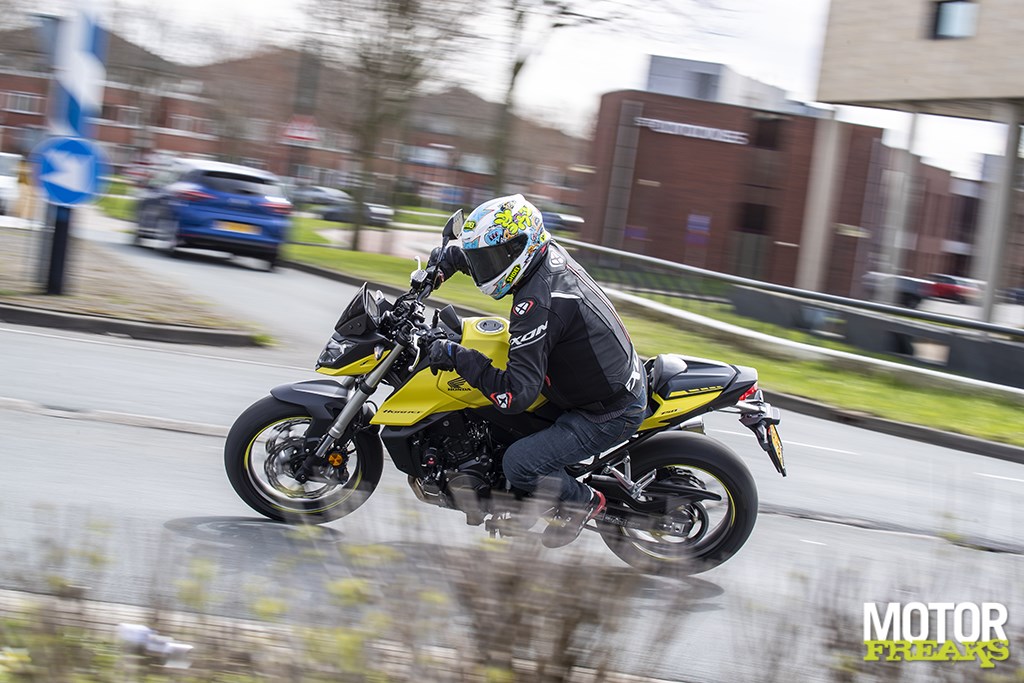Exactly 10 years after the model name was removed from the range, Honda has reinstated the Hornet. This time not as a 600 four-in-line, but as a 750 parallel twin. After moving heaven and earth, we were promised the scoop in our own country, but then March stirred violently with its tail. We have moved the full driving test to the Easter weekend, but we want to share our first experiences with you.

If we had to name one bike we’ve been eagerly awaiting this year, it would definitely be the Hornet, CB750 Hornet for completeness, the resurrection of the Hornet that was launched by Honda in 1998 as CB600F Hornet and continued until 2013 in the range would remain, after which the CB650F took over from the 600 and the Hornet name was dropped by Big Red.
Over the course of the CB600F’s development process, Honda had made the Hornet more and more vicious – to use the correct metaphors, made the sting more and more sharp – and that alone had piqued our interest. When the new Hornet was presented at the Intermot in Cologne last year and the specifications could be studied, we were completely convinced.
Although the CB750 Hornet had been built from the ground up, looking at its dimensions we couldn’t help feeling that Honda had taken a different model as a starting point: the CB500, as eerily identical as its dimensions were. To sum that up for you: length x width x height of the CB750 is 2,090 x 790 x 1,085 mm, versus 2,080 x 790 x 1,060 mm for the CB500.
However, it goes even further. Both models have a seat height of 785 mm and both models have a curb weight of 190 kilos, while the differences in geometry are only minimal. A wheelbase of 1,420 mm for the CB750 versus 1,410 mm for the CB500, head angle of 25° versus 25.5° and finally a trail of 99 mm versus 102 mm. Even the tire sizes are identical: 120/70 ZR17″ at the front and 160/60 ZR17″ at the rear.

Before we had driven the new Hornet even a foot, or even sat on it at all, we were convinced: this was a CB500 on steroids, with almost double the torque and power – 92 hp and 75 Nm versus 47 hp and 43 Nm. Knowing that the CB500F is really a super fun bike within the A2 segment, it was almost inevitable that the CB750 had to be the superlative in all respects.
At Honda we were therefore on top of being the first in our own country to be able to hit the road with the new Hornet, but when there is finally a green light that the engine can be picked up at Ten Kate, March stirs its proverbial tail, so that the engine no chance to show his true nature. It is bloody cold, it rains almost every day and to make it feel even more bleak, there is a considerable wind.
As wildly enthusiastic as we were in Portugal about the new Transalp, which had excelled under equally changeable weather conditions, although it had been significantly warmer then than now. Say triple, 18 degrees then versus 6 degrees now. Anyway, the contrast could hardly have been greater: as easy as the Transalp steered then, the Hornet was so petulant now.
Now it is fair to say that they had not had time to break in the engine at Ten Kate (not least because of the persistent bad weather) and we had therefore received it with a virgin mileage of only 8 kilometres, which will undoubtedly have played a role in the first stage. We therefore never had the idea that we were on the road with a CB500 on steroids.

Taking corners was therefore not a matter of course, only after we had imposed our will on the Hornet did it do what was expected of it – and then under protest. Inserting the bend meant that the necessary force had to be used first to convert the engine, after which it spontaneously wanted to fall further into the bend. As if you have to pull it over a dead spot first.
Strange, very strange. Until we take a closer look at the rubber and discover that Honda has equipped the CB750 Hornet with Dunlop Sportmax RoadSport 2 tires as standard, if you ask us the worst tire Dunlop has in its range and, like the Sportmax D214, has a decent needs a warm-up period and therefore does not come into its element at all. Now Dunlop is not alone in this, with Pirelli it is just as sad (if not even sadder), but it remains incomprehensible that it is not the steering characteristics, but the price that determines the choice of original equipment.
And so we now have to wait until the temperature is back in the double-digit range, the sun has brought the asphalt to a pleasant temperature and the Hornet is thoroughly – and extensively, because our motivation also falls away in the rain and cold – on the tooth can be felt. The CB750 Hornet definitely didn’t turn out like a CB500 on steroids in its first week, not even a distant cousin, but we’re hopeful that with a little better weather that could be very different. If the engine is in its element.
So to be continued…

– Thanks for information from Motorfreaks.